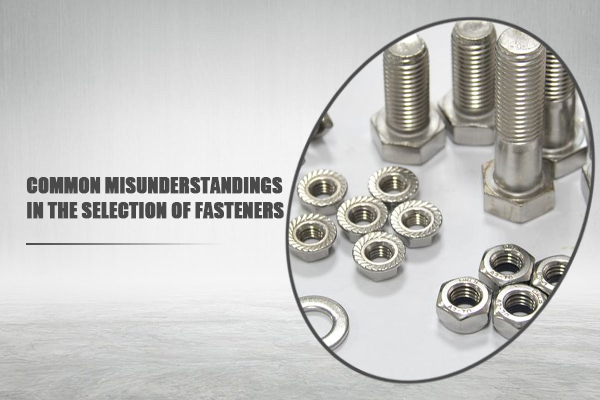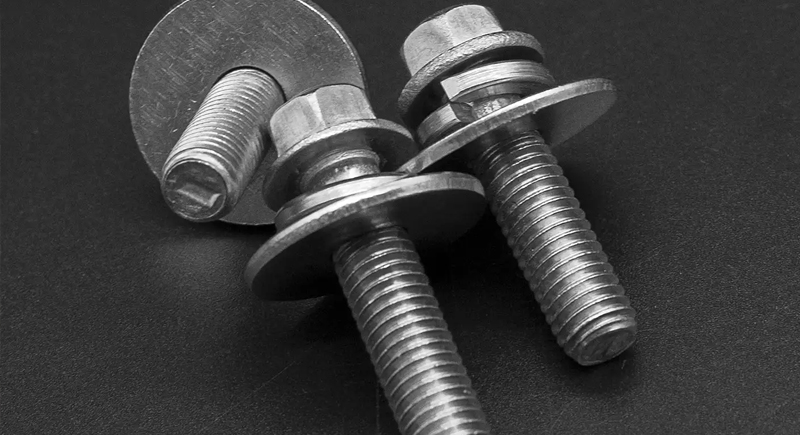VIDEO & CENTER

Misconception 1: Using Coarse Threads Instead of Fine Threads
For important connecting parts on machines, such as transmission shafts and flywheels, the bolts are mostly of fine-threaded type. When parts are missing during maintenance, some people use coarse-threaded bolts instead. Since the inner diameter of fine-threaded bolts is larger and the pitch and external angle are smaller, they have advantages such as high strength and good self-locking performance, and can withstand impact, vibration and alternating loads; when using coarse-threaded bolts instead, they are prone to loosening or breaking off, causing mechanical accidents.
Misconception 2: Inconsistent Fit of Holes
For bolts that bear lateral loads and shear forces (such as transmission shaft bolts and flywheel bolts), their fit with the bolt holes is a transitional fit. During assembly, it should be firm and reliable, and capable of withstanding lateral forces. Some people do not pay attention to inspection during assembly, and still install the bolts when there is a large gap between the bolts and the bolt holes. As a result, the bolts may loosen or break, causing mechanical accidents.

Misconception 3: Thickening the Nut
Some people often mistakenly believe that thickening the nut can increase the number of working turns of the thread, thereby improving the reliability of the connecting part. In fact, the thicker the nut, the more uneven the load distribution among the turns of the thread, and it is more likely to cause the connecting part to loosen.
Misconception 4: Using Multiple Washers for One Nut
During installation, sometimes there is a phenomenon of excessively long bolts. Some people then install many spring washers on one bolt. During the fixation process, the washers are not evenly stressed, and some may break, causing the bolt to lose its pre-tightening force or break. Or it may cause eccentric load, reducing the reliability of the bolt's connection.
Misconception 5: Using an Excessively Large Washer
Sometimes, due to the lack of suitable washers, some people use washers with larger inner diameters instead. This results in a small contact area between the bolt head and the washer, and the bearing pressure or locking force of the washer decreases. Under the action of vibration and impact loads, the bolt is prone to loosen.
Misconception 6: Inconsistent Torque
Many people believe that bolts should be "tighter rather than looser", so they consciously increase the tightening torque of the bolts. As a result, the bolts may slip or break. On the other hand, for important bolts that need to be tightened with torque, some people try to save effort by using adjustable wrenches to tighten them. As a result, they often fail to apply sufficient torque and the bolts loosen, causing mechanical failures.
Misconception 7: Improper Locking
After the assembly of important bolts, a locking device should be used for locking. When using an open jaw lock, a common mistake is to use an overly thin open jaw lock or a half-open jaw lock for locking; when using a spring washer for locking, a common mistake is that the opening offset of the washer is too small, losing elasticity; when using a locking plate for locking, a common mistake is to lock the locking plate on the edge of the nut; when using double nuts for locking, a common mistake is to place the thinner nut on the outside and not tighten it properly.
Misconception 8: False Firmness
There are impurities such as rust, scale, iron filings, sand grains, etc. in the threads of bolts, nuts or bolt holes, or there are burrs, mud, sand and other impurities on the joint surface of the connecting parts. Before assembly, these impurities are not removed. When tightening the bolts, due to the obstructive effect of the impurities, the surface is tightened very tightly, the torque value reaches the required value, but the connecting parts have not truly been pressed tight; another situation is that due to the supporting effect of oil, scale and other impurities in the bolt holes, although the torque of the bolt meets the regulations, the working parts are not pressed tight. Under such false firmness, vibration, load impact and temperature changes often cause the bolts to loosen quickly.














